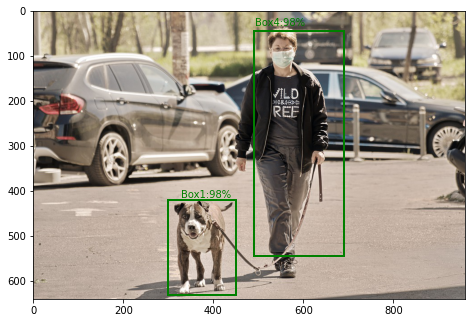Tensorflow.js is a Google-developed open-source toolkit for executing machine learning models and deep learning neural networks in the browser or on the node platform. It also enables developers to create machine learning models in JavaScript and utilize them directly in the browser or with Node.js.
The tf.layers.globalAveragePooling2d() function is used for applying global average pooling operation for spatial data.
Syntax:
tf.layers.globalAveragePooling2d( args )
Parameters:
- args: It accepts an object with the following parameters:
- dataFormat: The data format to utilize for the pooling layer. It should be ‘channelsFirst’ or ‘channelsLast’.
- inputShape: If it is specified then, it will be utilized to construct an input layer that will be inserted before this layer.
- batchInputShape: If it is specified it will be used for creating an input layer which will be inserted before this layer.
- batchSize: It supports the inputShape to build the batchInputShape.
- dtype: It is the kind of data type for this layer. This parameter applies exclusively to input layers.
- name: It is of string type. It is the name of this layer.
- trainable: If it is set to be true then only the weights of this layer will be changed by fit.
- weights: The layer’s initial weight values.
Return Value: It returns GobalAveragePooling2D
Example 1:
Javascript
import * as tf from "@tensorflow/tfjs"; const Input = tf.input({ shape: [3, 3, 3] }); const globalAveragePooling2d = tf.layers.globalAveragePooling2d({ dataFormat: 'channelsFirst', batchInputShape:[4,3, 3], trainable: true }); const Output = globalAveragePooling2d.apply(Input); const Data = tf.ones([4, 3, 3, 3]); const model = tf.model({ inputs: Input, outputs: Output }); model.predict(Data).print(); |
Output:
Tensor
[[1, 1, 1],
[1, 1, 1],
[1, 1, 1],
[1, 1, 1]]
Example 2:
Javascript
import * as tf from "@tensorflow/tfjs"; const Input = tf.input({ shape: [2, 2, 3] }); const globalAveragePooling2d = tf.layers.globalAveragePooling2d({ dataFormat: 'channelsLast', batchInputShape: [4, 3, 3], trainable:true }); const Output = globalAveragePooling2d.apply(Input); const model = tf.model({ inputs: Input, outputs: Output }); const Data = tf.tensor4d([8, 2, 2, 6, 8, 9, 9, 4, 8, 9, 3, 8, 5, 2, 5, 2, 8, 6, 4, 5, 9, 12, 8, 11], [2, 2 ,2, 3]); model.predict(Data).print(); |
Output:
Tensor
[[8 , 4.25, 6.75],
[5.75, 5.75, 7.75]]
Reference: https://js.tensorflow.org/api/latest/#layers.globalAveragePooling2d

